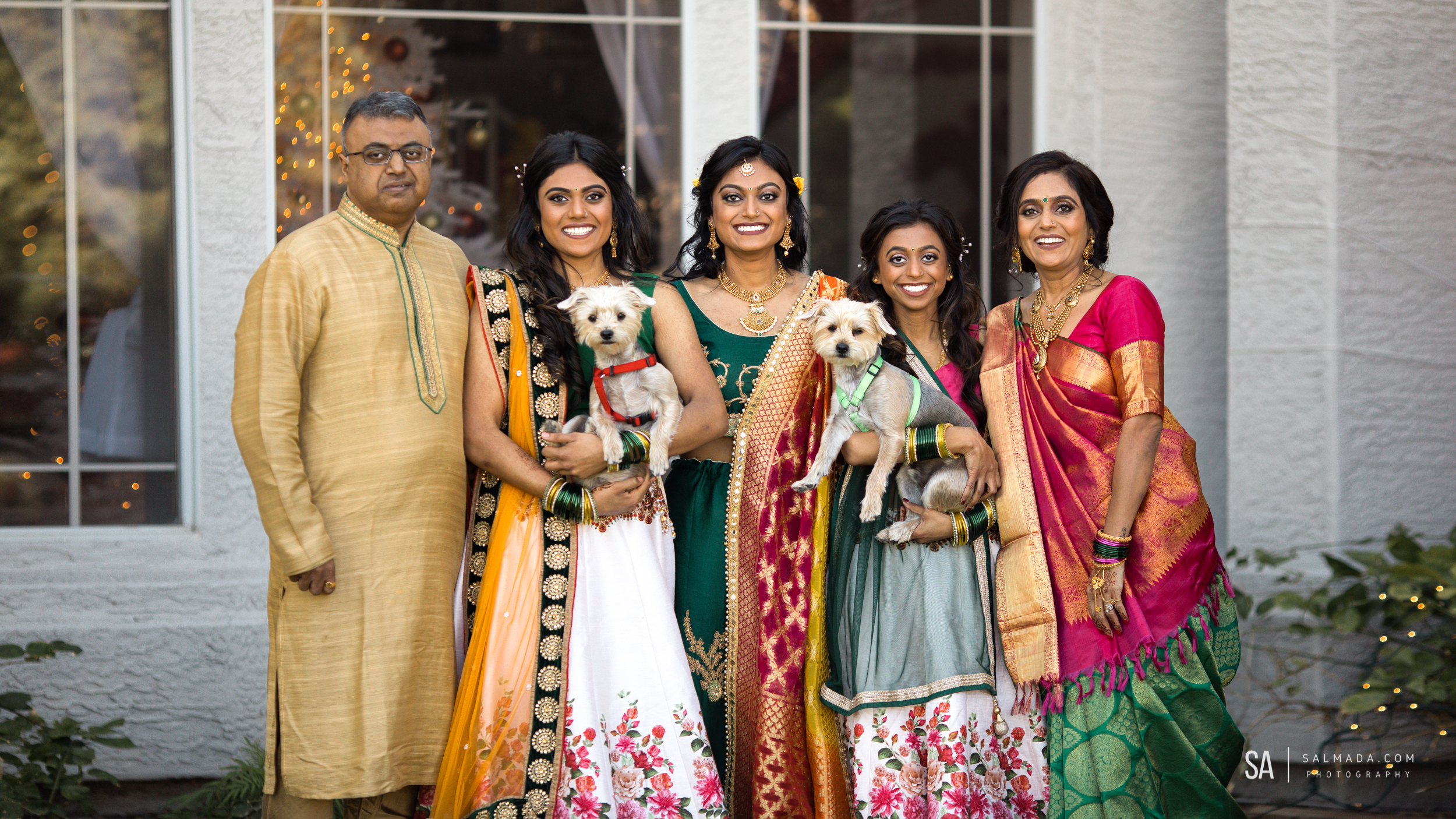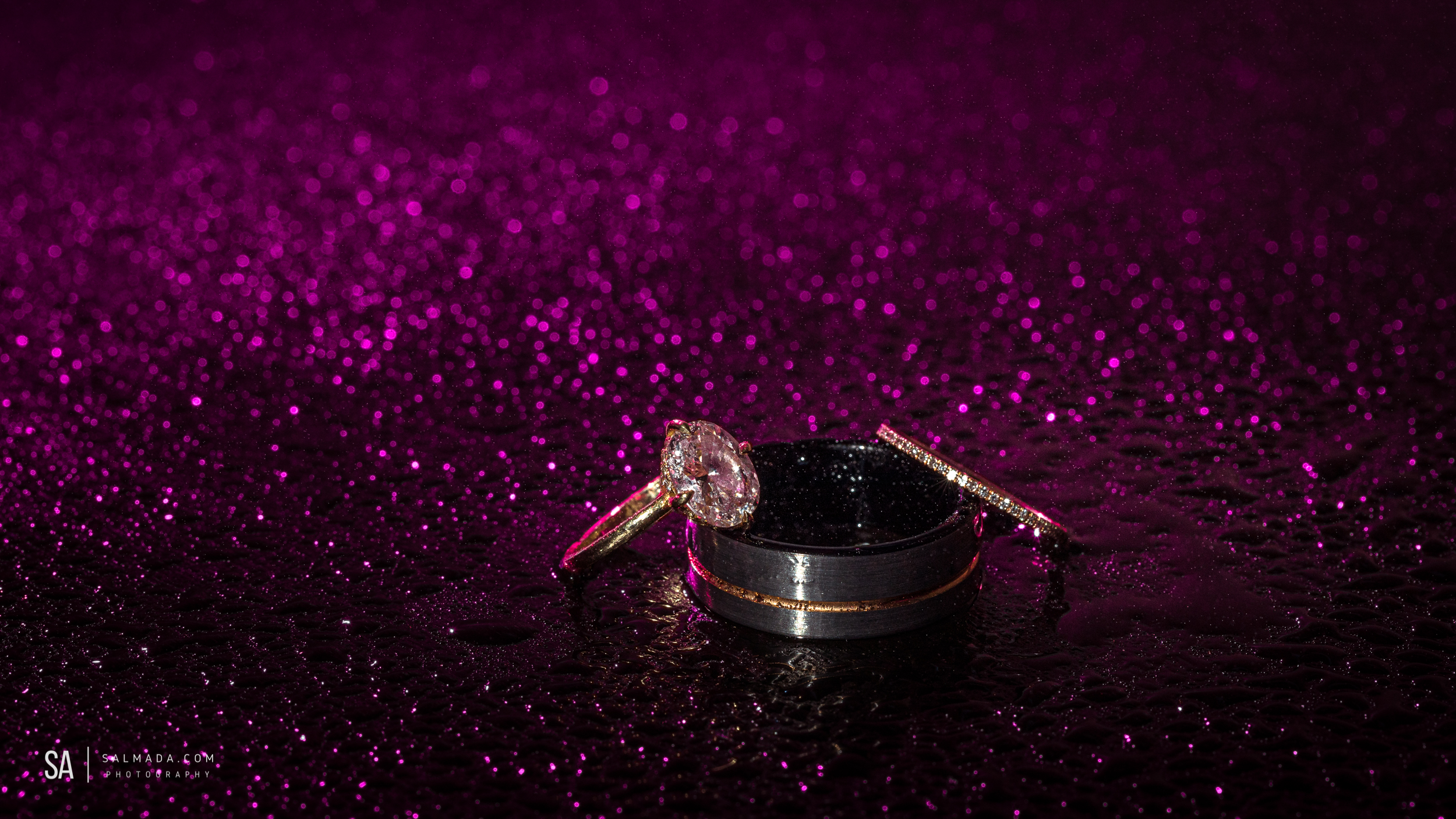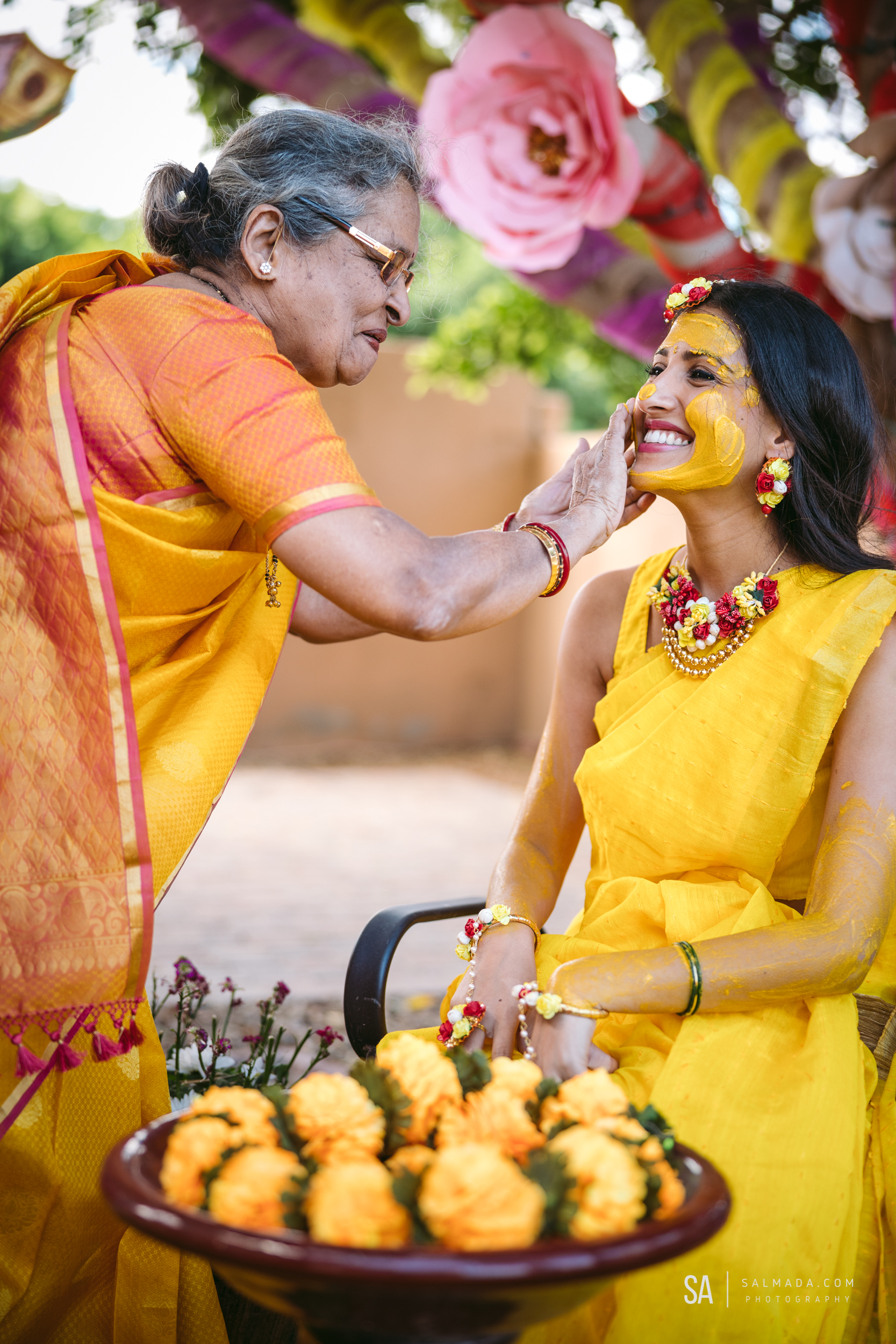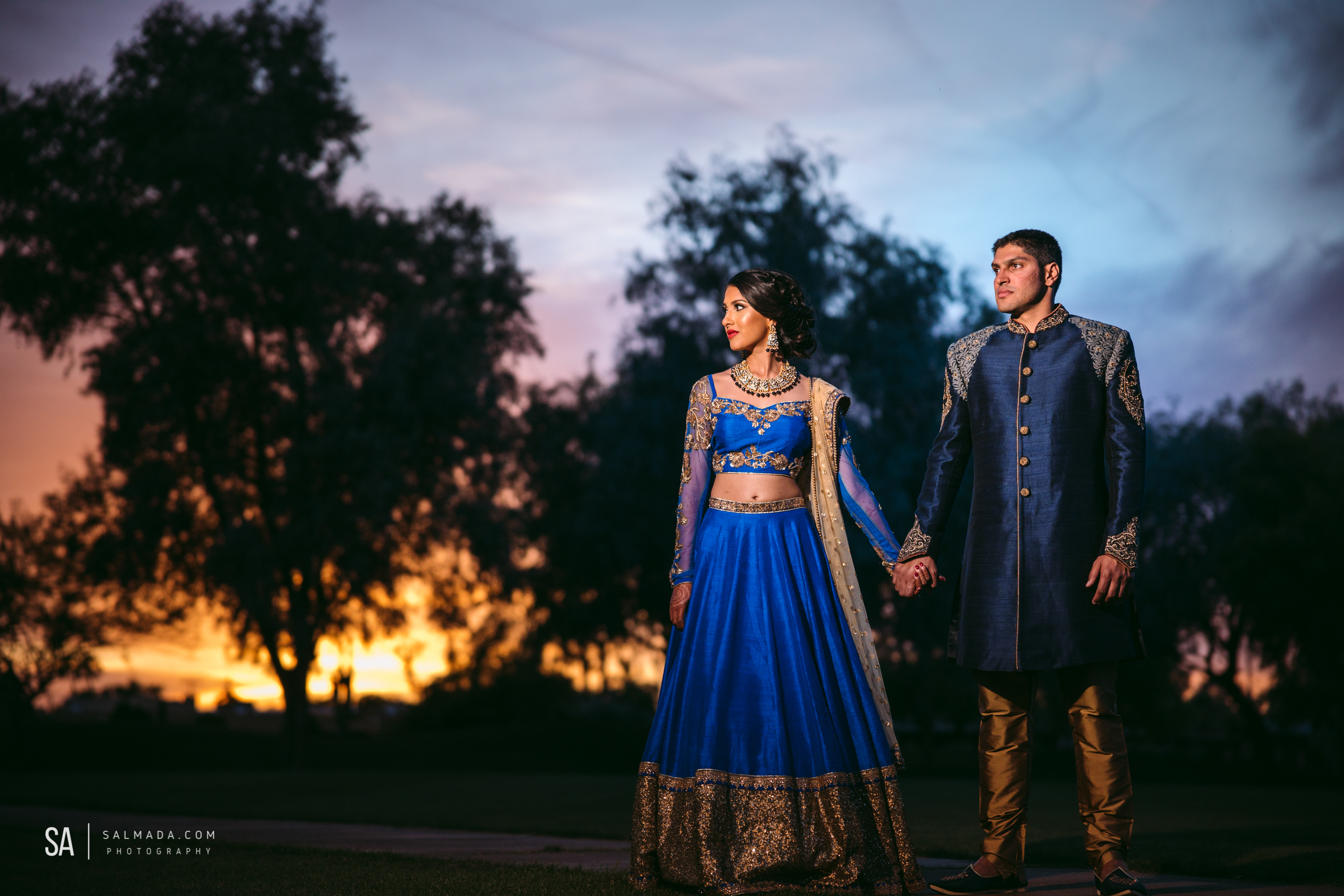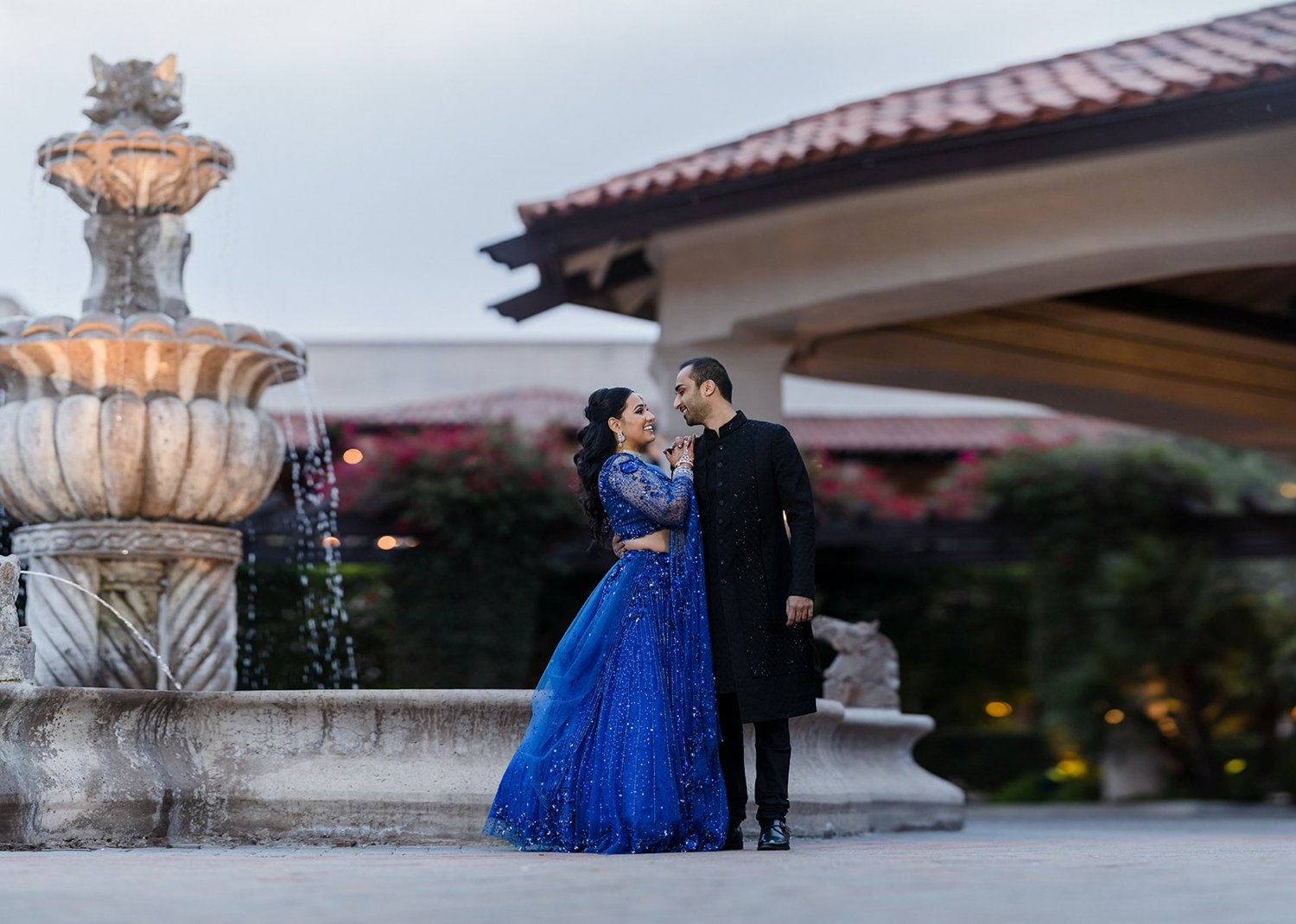The Hindu Wedding: Pre-Ceremonies
With bright, warm colors that tug at the soul and fill the heart with joy, Hindu weddings are truly full of tradition, beauty, and wonder. Although the decorations and wedding ceremony alone are enough cause for anyone to desire a celebration as beautiful as a Hindu wedding, there is so much more that goes into making the entire event grand and memorable. It is important to note that while not all Indian couples stick to the traditions of the Hindu culture, for those that do, the ceremonies chosen can vary from couple to couple based on their own beliefs and preferences.
Usually, a Hindu wedding celebration can start anywhere from 5 days to a week before the actual wedding day. This time frame is to ensure that there is enough time allotted for each pre-wedding ceremony, as each one is extremely important to the overall culture. Made up of multiple ceremonies that are centered around the bride and groom, both individually and as a family unit, Indian wedding celebrations are definitely not for the faint of heart. Those who participate will most likely be exhausted, but extremely happy they attended by the end of the entire ordeal! Although there are many ceremonies that take place during the wedding (link to Details of Hindu wedding here), we are going to focus on the top six most important pre-wedding ceremonies for Hindu weddings.
Continue reading to learn more about each of these interesting ceremonies and see what makes each one so special.
SAGAI (RING CEREMONY) AND TILAK (GROOM’S ACCEPTANCE)
In traditional American culture, the engagement of a couple is usually a surprise planned out by the groom. The bride may or may not be aware when the proposal will take place (although we are sure many have an idea) and her family may not be present when the question is asked. Although this same situation can take place for some Indian couples, most likely many will follow the Sagai tradition and have each of their families present to witness the ring exchange. This is the official asking of the bride’s hand by the bridegroom’s family and an extremely important marker in the wedding journey. Typically, this event takes place a few days, or even months, before the wedding and marks the beginning of the wedding preparations.
Hindu wedding ring designs
Where the Event Takes Place
During the Sagai ceremony, the bride and groom-to-be will meet at either a dining hall or the bride’s home. Traditionally it is the bride’s home where everyone would gather, as it was once a taboo for the bride to enter her in-laws house before the wedding. This tradition has recently been done away with; therefore any location can be a potential gathering for the Sagai. Depending on how many people attend, the couple may choose to have the Sagai at a dining hall in order to house all their guests, or they may decide to keep it intimate and just have it at a private residence.
Style Choices
When it comes to style, the bride and groom love to show off their most elaborate and elegant attire for the Sagai and Tilak events. Beautiful lehengas, saris, and sherwanis are common selections that can be seen at an event such as this. When it comes to the bride’s specific choice, she tends to go all out. Usually, the bride will select clothing with bright, neon colors in hues of blue, pink, purple, green, or red which will be decorated with intricate zari or moti handiwork. Delicate jewelry will typically complete the outfit as the bride wants to shine, but also still remain comfortable. For the groom, his attire will most likely consist of a sophisticated suit and tie, or the more classic kurta pyjamas, which is more on the comfortable, yet still fashionable spectrum.
Tilak Ceremony and Festivities
Once everyone has gotten dressed up and the festivities begin, tradition calls for the bride’s family to bring beautiful gifts and dried fruit for the groom’s family. Because the Tilak (a ceremony that welcomes the groom into the family) is often combined with the Sagai, the couple will be bestowed with additional gifts of dried fruit, nuts, sweets, jewelry, and henna. The bride’s family will usually bring a silver platter with specific items on it which include, a few grains of rice, a silver bowl containing Saffron, 14 dried dates wrapped in silver foil, and a coconut that has been covered in gold leaf. When the time comes, the bride’s father will perform the Tilak ceremony by applying a bit of KumKum, a red vermillion, on the groom’s forehead. This action is supposed to bring a blessing to the groom and enable him to be a loving husband and father. The bride does not partake in this part of the ceremony.
After the rituals are completed, the fathers of the bride and groom will place garlands over each other as a symbol of meeting and joining of the families. The Sagai will then typically come to a close with the bride and groom proceeding to exchange their rings and everyone in attendance receiving a gift of various sweets along with dried fruits. Whether or not the couple decides to make their Sagai a large affair, or keep it intimate and small, there is no doubt that Indian couples start off their wedding journey with a party and keep it going clear until the end.
Haldi (Turmeric Ceremony)
Warmed to the very core with the color of sunshine, a Haldi ceremony is one tradition of many that brings a unique feel to an Indian wedding. It is a time of cleansing where the bride and groom’s families join the individuals at their respective homes to help prepare for the big wedding day. Using a mixture of Turmeric (Haldi) powder, curd, sandalwood, gram flour, and either milk or rose water, the family will aid in purifying the couple by applying the paste to the bride and groom’s skin; primarily their face, hands, arms, and feet.
Haldi ceremony
Haldi dress
While applying a yellow paste all over the skin may seem like a rather odd method of cleansing, the Haldi is actually a beautiful and in-depth ceremony! Here are the primary reasons as to why this tradition is so cherished by those who participate in it:
Optimistic and hopeful for the future
Haldi Indian
Using Turmeric is actually quite auspicious in the Hindu culture as it represents purity, fertility, and overall good health. The beautiful yellow color is chosen to be worn by the bride and groom because it helps to prevent any staining of clothes that they wear every day, as well as further signifying the peace and happiness that their new life together will bring.
Glowing skin and healthy minds
Getting married can be a stressful event, and there’s nothing quite like being pampered a little to bring down the anxiety and welcome all the good vibes. Because Turmeric is extremely healthy for the skin, providing a beautiful glow, as well as containing an antioxidant known as curcumin (which acts as a mild antidepressant). The paste is a powerhouse for helping the bride and groom to feel fresh and relaxed for the most important day of their lives.
Purification and blessings
As Turmeric is considered to be a cleanser for both the body and the mind, this ritual is one of great importance for the beginning of the bride and groom. It is powerful in setting the tone for their marriage and moving forward with a clean slate, both physically and mentally. This is precious to those who are part of the Hindu culture. The ceremony is wrapped up with the bride and groom receiving a blessing from the elders of their families while traditional songs and dances commence in celebrating the union to come!
This particular practice can be held at various times during the wedding week, and it highly depends on each individual couple’s preferences. Traditionally, the Haldi ceremony is held the morning of the wedding, but it can also happen a day or two before.
Ganesh Puja (Worshipping Lord Ganesh)
No proper Hindu wedding will take place without provoking the blessings of the Elephant god, Ganesh, the remover of all obstacles. This important ceremony begins once the groom has arrived to the Mandap after his Baraat, and before the actual wedding nuptials are ready to commence. Despite the fact that every ceremony included in a Hindu wedding is important, the Ganesha Puja is extremely vital to the progress of the wedding as it is intended to bestow good luck onto the new couple as well as destroy any possible obstacles that may come across their path. Let’s take a look at the most common objects used within this ceremony at what each one’s purpose is.
Ganesh Puja Mantra
Lord Ganesh
Idol of Lord Ganesh: Being that the god Ganesh is the main focus of this ceremony; his idol is a very integral ingredient to the entire ordeal. According to tradition, the idol must be placed on a raised platform, but can be made of any material such as gold, silver, clay, or paper mache.
Modak: This sweet treat, made of an outer rice shell and delicious coconut filling, is known to be Ganesh’s favorite. Because of this, any Ganesh Puja would be incomplete without Modak present. An offering of 21 Modak’s is customary.
Flowers of Red: According to legend, Lord Ganesh loves the color red, so the decorations for a Ganesh puja will usually include red flowers. The use of red blooms is also important as they represent purity and beauty. Any type of flower is acceptable; however, hibiscus is a favorite.
A coconut: During the ceremony, a whole coconut will be offered to Lord Ganesh to invoke the blessings of his father, Lord Shiva. This is done by smashing the coconut symbolizing the shattering of one’s ego.
Durva Grass: A favored grass that represents prosperity and riches.
Betel nut: The Ganesh Puja cannot be completed without the offering of a Betel nut as this symbolizes giving over your ego to Lord Ganesh.
Red Thread: This thread, also known as Mouli, is a sacred part of the ceremony and is offered to Lord Ganesh.
Lame and incense: Incense, or dhoop, is a common ingredient that will be found in any Ganesh Puja as it cleans negative energy and spreads positivity.
Sindoor and Chandan: Finally, these last two elements are important to the Ganesh Puja as they soothe, cleanse, and protect the soul from negative energy.
It is easy to see just how much time, effort, and care goes into planning the Ganesh Puja. This ceremony is so important to a Hindu wedding as it is designed to protect the young couple and set them off on the right foot as they start a new journey together. Full of color and sweet treats, Ganesh Puja is a ritual that is not easily forgotten by those that take part in it.
Mehndi (Henna Ceremony)
Every wedding has a moment where the bride gets to be pampered and prepared for her special day. When it comes to a Hindu wedding, this event is a huge celebration that can actually go on for hours, and in some states, even include the groom! The Mehndi is all about applying Henna to the bride’s arms, hands, and feet. The festivities will usually take place in the evening and involve much music, dancing, and of course, delicious food. While the bride herself is the main priority, usually having to sit for hours while her intricate Henna is crafted, the female guests may also get Henna themselves. Typically this is done on at least one hand.
Mehndi design
Mehndi images
Brief History
Henna is a beautiful art that uses paste from dried, ground up Henna leaves to decorate the skin with a lovely dark pigment. The richly colored paste is left to set on the skin overnight and can last up to one month depending on the quality of the leaves that was used to make the paste, as well as how long the Henna was able to stay on the skin before being taken off. At one time it was believed that dots of Henna applied to the palms of the hands had a cooling effect for the body. Over time, the early users of Henna began to connect the dots with lines and shapes, which eventually lead to the intricate designs that we see today!
Why the Ceremony is Loved
This practice of applying Henna is extremely popular in the Middle East as well as many other parts of the world. It is known for having “Barakah”, or blessings. Because of this, before big events such as weddings, Henna is applied not only for beauty purposes, but also as an act of wishing good luck, joy, and beauty to the wearer. While at one time, the elders of a family or village may have been the ones to apply the Henna due to their many years of mastering the skill, in modern times, brides will usually hire talented contemporary Henna artists to come and apply it at the Mehndi. This allows for every female member of the family who may want to partake in receiving Henna a chance to do so! Coming together in order to celebrate such an integral part of a Hindu wedding in a beautiful way is special and definitely a tradition that won’t die out anytime soon thanks to its immense popularity.
Sangeet (Music & Singing Ceremony)
When the wedding jitters start to kick in and the preparations begin to take a toll on everyone that is when the Sangeet comes to save the day. Seen as the most fun out of all the Hindu wedding celebrations, this ceremony of dances and music was once included in the formal engagement event. But in recent years, it has been turned into its own individual celebration. Not only does this mean that the entire wedding event gets to be extended by an entire day, but it also is placed at the perfect time to help relieve any of the pre-wedding stress!
Sangeet
During this ceremony, the party really begins and usually takes place about 2-3 days before the wedding ceremony. Traditionally, this event could last up to 10 days! But over time, in order to fit in all of the other ceremonies and keep the wedding event in a week time frame, the Sangeet was shortened down to just one day. This is still plenty of time to celebrate and have a great time! The word”Sangeet” translates from Sanskrit to mean “sung together.” The entire celebration is focused around singing, dancing, and simply embracing the joy and love surrounding the new couple. Although at one time the Sangeet was primarily just for the women, recent times allow for men to join in on the fun and create a time where the two families can bond, releasing any of the stress or tension that comes with planning a wedding. Usually the Sangeet will take place in the bride’s home, but depending on the size of the gathering, the party may end up taking place in a banquet hall to accommodate all the guests.
Indian wedding at Hyatt
What the Ceremony Involves
Upon the arrival of the families, the bride’s family will welcome the groom’s family by singing a traditional folk song called the Suhaag, which is sung to the tune of the Dhol. The female members of the two families will gather together to sing traditional songs that are centered around the bride and groom while the elders lead the entire pack, choosing which songs they should sing next. All of the songs will follow themes that pertain to having a successful marriage, the bride leaving her parents’ home, and even jokes about the in-laws! This event is all about coming together as a joined family, along with celebrating the joy and love surrounding the new couple. Families can get to know one another before the big wedding day and let loose with choreographed dances, good music, and much laughter.
Sangeet dance
From each little detail to simply the way the environment feels, a classic Hindu wedding is breathtaking and full of wonder. Each of these specific ceremonies that we talked about here, starting with the Sagai ring ceremony and ending with the Ganesh Puja, has a special part to play in the overall feel of a traditional wedding. Although it may seem like merely an extended party, the symbolism behind every single ceremony is all about supporting the new couple and their future family. Filling the week of the wedding with well wishes, happiness, joy, and love is exactly what all of these ceremonies are intended to do, and they do it well !
Sangeet dresses
“Today two people become one. It doesn’t mean she gives up everything to become you, or he gives up all for her. It means balance. If you remember this, you will always be happy.”

